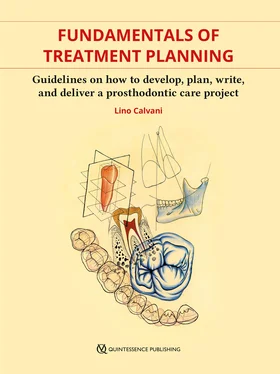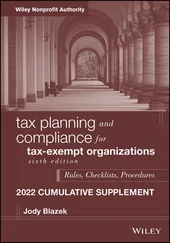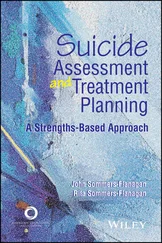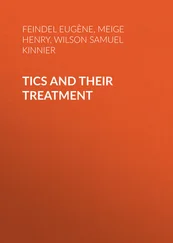“The world moves in front of them who know where to go and what to do.”
Lino Calvani
I approached this profession and specialty with infinite humbleness, respect, curiosity, and commitment, and this is what still pushes me forward with passion. Prosthodontics is a beautiful, complex, and very demanding specialty in terms of knowledge and commitment. I have been moved to see in the literature how many have dedicated so much of their lives to its development and success. The list of literature that follows (in alphabetical order) is a small but highly representative sample of the significant writings dedicated to the growth and development of prosthodontics. The amazing professionals who have written these articles, papers, and books, and the many others who are not included in this list for reasons of space, have set a standard of passion and professionalism that is difficult to match.
The specialty of prosthodontics was originally recognized in 1948 by the Commission of Dental Accreditation (CODA), an independent agency of the American Dental Association (ADA), which is an independent organization recognized by the United States Department of Education.
The ADA defines prosthodontics as: “the dental specialty pertaining to the diagnosis, treatment planning, rehabilitation, and maintenance of oral function, comfort, appearance, and health of patients with clinical conditions associated with missing or deficient teeth and/or oral and maxillofacial tissues using biocompatible substitutes.”
During the three years of training in all United States postgraduate prosthodontics specialty programs, students must become knowledgeable in the comprehensive treatment of clinical cases for missing or deficient teeth and oral and maxillofacial tissue in order to competently find solutions and cures using biocompatible substitutes. The focus is on the following areas:
1. Patient assessment (both medical and dental history).
2. Extraoral and intraoral examination.
3. Radiologic assessment and occlusal analysis.
4. Temporomandibular joint (TMJ) assessment.
5. Systemic, infectious, and neoplastic disease screening (education for prevention).
6. Diagnosis.
7. Risk assessment and prognosis.
8. Treatment planning.
9. Comprehensive treatment.
10. Outcomes assessment and delivery.
11. Follow-up and maintenance.
As professionals, we ‘profess’ to believe in who we are and what we do. As the Mission Statement of the American College of Prosthodontics states: “Prosthodontists are specialists in the restoration and replacement of missing teeth and oral/facial structures with natural, esthetic, and functional replacements. This includes surgical implant placement, the simple to most complex implant-supported restorations, laboratory and clinical training in esthetics/cosmetics, crowns, bridges, veneers, inlays, removable complete and partial dentures, dental implants, TMD-jaw joint issues, traumatic injuries to the mouth’s structures, congenital or birth anomalies and/or teeth, snoring and sleep disorders, as well as oral cancer, prosthetic reconstruction, and continuing care. Prosthodontists are experts in treatment planning.”
Literature
1. American Board of Prosthodontics. History, information, and examination requirements of the American Board of Prosthodontics. J Prosthet Dent 1984;52:281–287.
2. American College of Prosthodontists. Reframing the Future of Prosthodontics: An Invitational Leadership Summit, 2006:11–12.
3. American College of Prosthodontic. Mission Statement, 2018.
4. American Dental Association. Report of the ADA-Recognized Dental Specialty Certifying Boards, 2012;2.
5. Atwood DA. Practice of prosthodontics: past, present, and future. J Prosthet Dent 1969;21:393–401.
6. Boucher CO. Trends in the practice and philosophy of prosthodontics in the United States. J Prosthet Dent 1966;16:873–879.
7. Boucher LJ. The role of research in prosthodontics. J Prosthet Dent 1965:15;962–966.
8. Boucher LJ, Wood GH. Workshop on advanced prosthodontic education: a preliminary report. J Prosthet Dent 1969;21:433–442.
9. Boucher LJ. Advanced prosthodontic education. J Prosthet Dent 1976;35:29–30.
10. Carlsson GE, Omar R. Trends in prosthodontics. Med Princ Pract 2006;15:167–179.
11. Chalian VA, Dykema RW. Minimal clinical requirements for advanced education in prosthodontics. J Prosthet Dent 1976;35:39–42.
12. Garfunkel E. The consumer speaks: how patients select and how much they know about dental health care personnel. J Prosthet Dent 1980;43:380–384.
13. Hardy IR. History of the specialty of prosthodontics. J Prosthet Dent 1965;15:946–948.
14. Johnson WW. The history of prosthetic dentistry. J Prosthet Dent 1959;9;841–846.
15. Jones PM. Advanced education in prosthodontics – curriculum content. J Prosthet Dent 1976;31:31–33.
16. Kelsey CC. Survey of income of prosthodontists as assessed by the American College of Prosthodontists. J Prosthet Dent 1975;34:120–124.
17. Knutson JW. Research and the future of prosthodontics. J Prosthet Dent 1961;11:375–381.
18. Koper A. Minimal clinical requirements for advanced prosthodontics education. J Prosthet Dent 1976;35: 34–36.
19. Koper A. Advanced prosthodontic education: a rationale for a curriculum which integrates fixed and removable prosthodontic education. J Prosthet Dent 1979;41:576–578.
20. Laney WR. History of the American Board of Prosthodontics. J Prosthet Dent 1972;28:655–656.
21. Laney WR. American Board of Prosthodontics. J Prosthet Dent 1975;34:675–693.
22. Laney WR. Limitation of clinical practice to prosthodontics. J Prosthet Dent 1976;35:57–61.
23. Love WB. Prosthodontics – Past, present and future. J Prosthet Dent 1976;36:261–264.
24. Lytle RB. Criteria for evaluating candidates or the American Board of Prosthodontics. J Prosthet Dent 1969;21:417–422.
25. Mann WR. What dentistry expect of the prosthodontist. J Prosthet Dent 1965;15:949–955.
26. Morse PK, Boucher LJ. How 274 prosthodontists ranked four methods of advanced education in prosthodontics. J Prosthet Dent 1969;21:431–432.
27. Morse PK, Boucher LJ. What a prosthodontist does. J Prosthet Dent 1969;21:409–416.
28. Nagle RJ. The role of the specialty of prosthodontics in service to the public and to the profession. J Prosthet Dent 1965;15:956–961.
29. Ortman HR. Meeting the challenges facing prosthodontics. J Prosthet Dent 1980;43:586–589.
30. Payne SH. Knowledge and skills necessary in the practice of prosthodontics. J Prosthet Dent 1968;20:255–257.
31. Payne SH. The future of prosthodontics. J Prosthet Dent 1976;35:3–5.
32. Taylor TD, Bergen SF, Conrad H, Goodacre CJ, Piermatti J. What is a Prosthodontist and the Dental Specialty of Prosthodontics? American College of Prosthodontics, Position Statement, 2014.
33. The Academy of Denture Prosthetics. Principles, concepts and practices in prosthodontics. J Prosthet Dent 1968;19:180–198.
34. Travaglini EA. Prosthodontics and the single-concept film. J Prosthet Dent 1973;30(4 Pt 2):640–641.
35. Wiens JP. Leadership, stewardship, and prosthodontic’s future. Int J Prosthodont 2007;20:456–458.
36. Wiens JP, Koka S, Graser G, et al. Academy of Prosthodontics centennial: The emergence and development of prosthodontics as a specialty. J Prosthet Dent 2017;118:569–572.
37. Young JM. Prosthodontics in general practice residency. J Prosthet Dent 1974;31:615–627.
CHAPTER ONE
Past, present, and future of treatment planning
“Those who do not learn from history are doomed to repeat it.”
George Santayana (1863–1952)
“The past should be read with the eyes of present time.”
Charles Darwin (1809–1882)
Читать дальше












